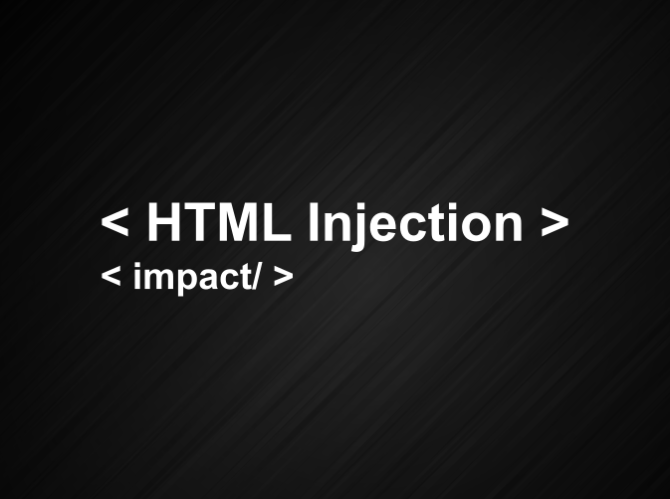Impacts of HTML Injection

In the tapestry of the digital world, where websites paint the canvas of user experience, web security stands as a sentinel guarding against unseen threats. Among these lurking dangers, HTML injection emerges as a formidable adversary, wielding the power to disrupt not only the seamless façade of web pages but also the very sanctity of user data. In this exposé, we delve into the cascading repercussions of HTML injection, from tarnishing a web page's reputation to surreptitiously pilfering sensitive user information.
- Using or Harming the Reputation of the Web Page: A web page's reputation is the cornerstone of its online presence. It is akin to a virtual handshake, where users form first impressions based on design, content, and functionality. HTML injection, a technique where malicious code is injected into a website's codebase, can swiftly transform this digital oasis into a minefield. Imagine a well-established blogging platform suddenly displaying unsavory content or propagating misleading advertisements due to an injection attack. The consequences are dire: users flee, trust crumbles, and the website's credibility plunges. What was once a paragon of reliability is now a cautionary tale, reminding us of the fragility of online trust.
- Exfiltrating Sensitive User Data: In an era where personal data is the currency of the digital realm, protecting user information is paramount. HTML injection, when exploited by cybercriminals, becomes a stealthy conduit for data exfiltration. This nefarious act involves siphoning off sensitive user data, such as email addresses, passwords, and financial details, to be wielded for sinister purposes. Imagine a social networking platform infiltrated by an HTML injection that quietly harvests users' private messages and personal details. This clandestine breach not only violates privacy but also exposes victims to identity theft, financial fraud, and a profound loss of trust in online platforms.
- Exfiltrating Anti-CSRF Tokens: Cross-Site Request Forgery (CSRF) protection mechanisms are the guardians preventing unauthorized actions on behalf of users. HTML injection, when aimed at exfiltrating anti-CSRF tokens, can dismantle this crucial defense. The implications are dire: attackers can forge unauthorized requests, manipulating user accounts and wreaking havoc without detection. Imagine a banking application where an HTML injection exploits a vulnerability to access anti-CSRF tokens, enabling unauthorized transfers from user accounts. The breach not only erodes trust in the financial institution's security but also exposes users to financial losses.
- Exfiltrating Passwords Stored in the Browser: The modern digital landscape thrives on convenience, often at the cost of security. Many users rely on browsers to store passwords for seamless logins. HTML injection attacks, however, can exploit this convenience, extracting stored passwords surreptitiously. Imagine an e-commerce platform plagued by an HTML injection that quietly collects stored passwords from users' browsers. The fallout is a breach of personal accounts, potential identity theft, and a stark reminder that convenience must always be balanced with vigilant security practices.
In a world where the web is the lifeline connecting individuals, communities, and businesses, HTML injection's impact transcends mere code. It reverberates through shattered trust, stolen identities, and compromised experiences. As we navigate this digital frontier, fortifying web security against HTML injection becomes not just a responsibility, but a necessity to safeguard the essence of our interconnected world.
As a dedicated author on my blog, I delve into the realms of my interests with fervor. Through my eloquent and insightful articles, I strive to share my unique perspective, spark meaningful conversations, and leave readers enlightened and captivated by the power of words. Join me in navigating a tapestry of ideas and narratives that reflect both intellect and creativity
Related Articles..
How to find out Directory Listing Vulnerability ?
Testing directory listing is essential to ensure t...
Impacts of HTML Injection
In the tapestry of the digital world, wh...
Things to know all about HTML Injection
HTML injection is a type of injection vulnerabilit...
Directory Listing
Web servers can be configured to automatically lis...




